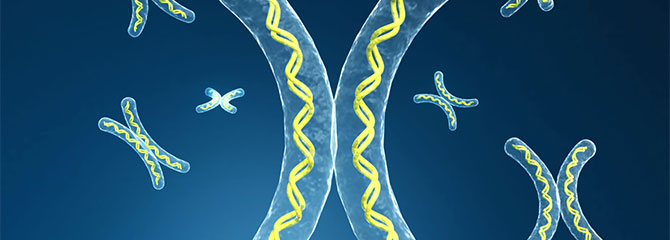How Does a Person Get a Bleeding Disorder?

There are many different and rare bleeding disorders. Hemophilia is one of the more common inherited types of bleeding disorders. Currently, about 20,000 individuals in the United States have hemophilia. Although hemophilia most commonly occurs in men, it can also occur in women. Approximately 1% to 2% of the U.S. population have von Willebrand disease (VWD), another common, inherited type of bleeding disorder.
This section covers:
- How Does a Person Get Hemophilia?
- How Does a Person Get von Willebrand Disease?
- Other Factor Deficiencies
How Does a Person Get Hemophilia?
- Hemophilia affects people from all racial and ethnic groups. It is caused by a problem in one of the genes (factor VIII or factor IX) that tells the body to make the clotting factor proteins needed to form a blood clot. These genes are located on the X chromosome. Males have one X and one Y chromosome (XY) and females have two X chromosomes (XX)
- Because males only have one X chromosome, if they inherit an X chromosome that has the abnormal gene, then they have hemophilia. Because females have two X chromosomes, there are two ways they can be affected by hemophilia:
- If only one X chromosome is affected, bleeding symptoms may or may not be present. If bleeding symptoms are present then these females may have hemophilia. If no bleeding symptoms are present then these females are said to be "carriers" of hemophilia. In other words, they carry the gene that causes hemophilia on the X chromosome, which means that they can pass the affected gene onto their children.
- If both X chromosomes are affected, then these females have hemophilia.
- Although hemophilia is a genetic disorder, it sometimes occurs in people who don’t have a family history of it. In fact, about one-third of people who are diagnosed with hemophilia have no family history of this bleeding disorder. These cases are thought to be due to a change (called mutation) in the gene's instructions for making the clotting factor protein. This change can prevent the clotting protein from working properly or the protein may be missing altogether
- The 2 most common forms of hemophilia are hemophilia A and hemophilia B. Hemophilia A is about 4 times more common than hemophilia B. About half of those with hemophilia A have a severe form; that is, they have less than 1% of the clotting factor they need
Here are examples showing how the hemophilia gene can be inherited.
How Hemophilia is inherited
For more information on hemophilia, click here.
How Does a Person Get von Willebrand Disease?
- VWD is a bleeding disorder caused by a defect or deficiency of the blood clotting protein, called von Willebrand factor. The disorder occurs in about 1% to 2% of the U.S. population
- VWD is a genetic disorder that can be inherited from either parent. It affects males and females equally. A man or woman with VWD has a 50% chance of passing the gene on to his or her child. There are no racial or ethnic associations with the disorder. VWD tends to run in families.
- There are several different types and subtypes of VWD. In some cases, VWD can occur when only one parent passes down the defective gene to a child. In other cases, a child will inherit the disorder only when both parents have the gene. Even if both parents have mild or asymptomatic disease, their children are likely to be severely affected
For more information on VWD, click here.
Other Factor Deficiencies
- Ten clotting factors are needed to form a blood clot. A person can have a deficiency in one or more of them. The most well known deficiencies are those of factor VIII (8), which causes hemophilia A; and factor IX (9), which causes hemophilia B. These factor deficiencies are called sex-linked genetic disorders because they are caused by inheriting a change in a gene (called a mutation) on the female chromosome
- Deficiencies in the other eight lesser-known clotting factors have been identified, but they are rare. They are not sex-linked. Rather, the mutated gene is passed down in an autosomal recessive fashion. This means: first, the mutated gene is not on the male or female chromosome and second, the child would have to inherit the mutated gene from both parents in order to have the disease. This rarely happens. If the child inherits the gene from only one parent, he or she will be a carrier of the deficiency and may have mild symptoms. These rare clotting factor deficiencies occur as often in men as in women
Watch the video below to learn how blood clots form.



